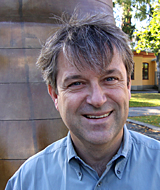First dna sequencing of cancer performed
Now, the first so-called cancer cell line in Sweden has been DNA sequenced at Stockholm’s new Science for Life Laboratory, a national research centre, which is partly managed by KTH. The dna sequencing gives a picture of what cancer looks like and is a step towards better understanding of how cancer arises.

The first dna sequencing of the cancer cell line aims to visualize the complete genetic code of cells originating from a form of bone cancer.
For a long time, researchers have worked to identify all human proteins in cells with the same origin, within the major Protein Atlas project, and hopes are now high that they will be able to assimilate information on how changes at protein level are related to changes in the DNA of the cell.
So, by combining information from the DNA sequencing with data of protein expression in the cell line, researchers hope to gain greater understanding of the impact of the genome on the development of cancer.
“Our objective is to create interdisciplinary research in which the newly gained knowledge will be used to make breakthroughs in areas such as the medical field,” says Joakim Lundeberg, genetics researcher at KTH and head of the cell line study at the Science for Life Laboratory.
In the study, after a careful bioinformatic analysis, he and his colleagues could characterize a number of crucial features of the cancer cell line, known as U2-OS.
“Awareness of different major restructurings and genetic mutations, combined with data already available at protein level can be of great help in the future interpretation of syndromes as a result of various cancers,” says Pelin Akan, who produces most of the actual research work.
He adds that the information provided by the dna sequencing is very comprehensive.
“To see this dna sequencing makes me incredibly humble about cancer. It is not that simple to determine what is the chicken or what is the egg in this chaos,” says Joakim Lundeberg.
At the same time dna sequencing is a step in the right direction towards a better understanding of how cancer arises. An example of this is when some genes have lost their normal functions, as shown by the dna sequencing.
“Parts of the dna sequencing show, for example, that a part of the chromosome is gone. If there in this part was a control function, a mechanism to keep track of cell growth which becomes uncontrolled in the case of cancer, it may give an indication as to what has happened,” says Joakim Lundeberg.
For more information, please contact Joakim Lundeberg at 08-524 81 469 / joakim.lundeberg@biotech.kth.se or Pelin Akan at 08-524 81 452 / pelin.akan@scilifelab.se.
Peter Larsson

